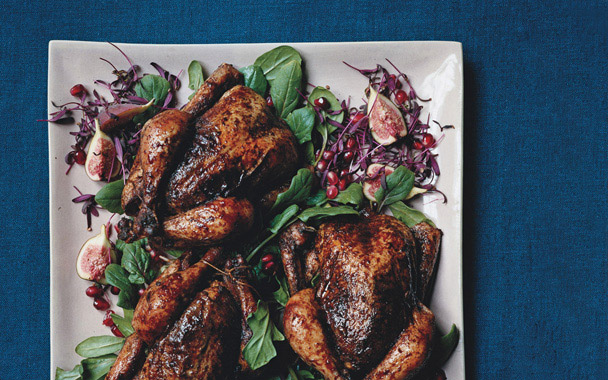I never liked haroseth, the nut and fruit mixture bound with wine that is a part of the ceremonial Seder table. Haroseth symbolizes the mortar used by the Jews while they were enslaved in Egypt, and my family’s version, made of grated apple, walnuts, and cinnamon laced with Manischewitz, looked just like cement: dark, heavy, and dense. The Eastern European–influenced fare my mother prepared—brisket, matzo farfel stuffing, gefilte fish—similarly reflected our Ashkenazi background. Because my parents’ house was always Passover headquarters, I had never tasted the food from someone else’s Seder table. It never occurred to me that haroseth could be something different.
But then, a couple of years ago I worked on the recipes for a Passover menu developed by Floyd Cardoz, the chef at Tabla, an Indian-inspired restaurant in New York City. Chef Cardoz’s haroseth had the traditional apples and walnuts, but he also included dates and ginger, ingredients that were more familiar to the cooking of his native India. Likewise, when I began developing this April’s Sephardic Passover menu, it was a joy to have so many of the foods and spices from the Middle East and the Mediterranean at my fingertips. It felt as if a whole new culinary world had opened up before me… and for the haroseth. I found my influence in Morocco and made a paste of dates, apricots, pistachios, and almonds (in lieu of earthy walnuts), which I flavored with cayenne, orange, and cardamom. I spiked it all with Sherry, as a nod to Spain (not Moroccan, yet still in the Sephardic realm). This haroseth still looked like cement, as any decent haroseth should, but the taste was entirely different, simultaneously savory, sweet, and spicy.
With the haroseth taken care of, I moved onto the menu’s main course. Lamb, which is prevalent on many Sephardic tables, sounded like a great idea. I cooked a lamb shoulder stuffed with garlic and spring herbs. It was awful. Lamb can be wonderful, but cuts like shoulder can have a gaminess that’s not very appealing. Time to move on. Someone suggested Cornish hens, which I love for their versatility and their small size, which feels very special. I coated the hens with a fragrant spice rub before roasting, then deglazed the pan with Sherry to make a quick sauce. Success. Ruth Cousineau, Gourmet’s test kitchen director, thought the haroseth would be perfect stuffed inside the hens. Just as I had never thought haroseth could be made any other way, I never thought it could be used as a stuffing. But its combination of fruit, nuts, and spice had all the makings of one—and an irresistible one at that.

